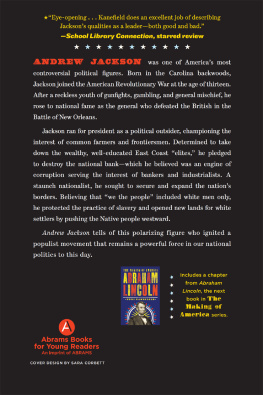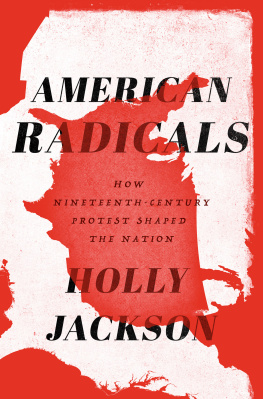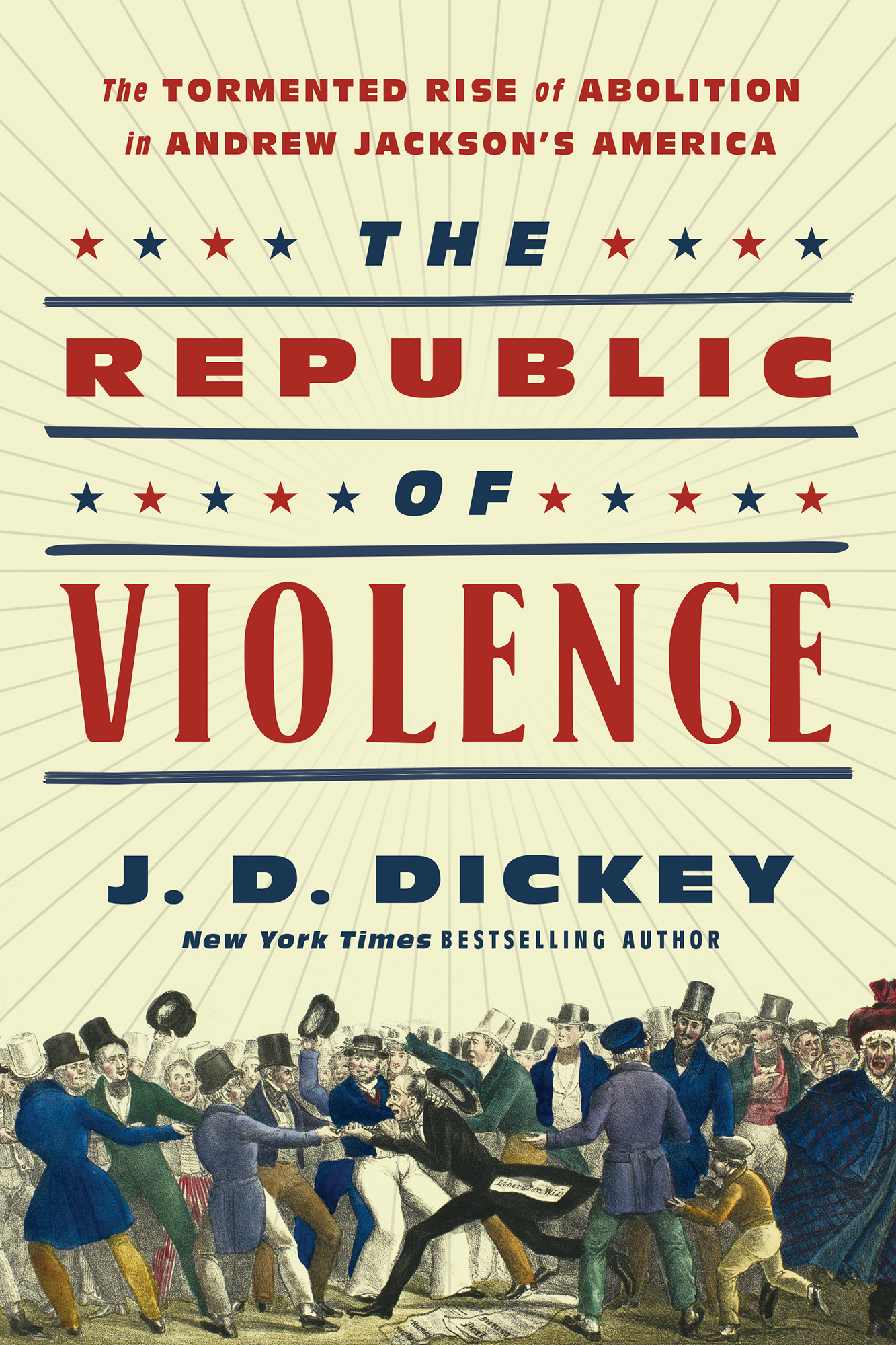Contents
Guide
The Tormented Rise of Abolition in Andrew Jacksons America
The Republic of Violence
J.D. Dickey
New York Times Bestselling Author
ALSO BY J. D. DICKEY:
American Demagogue: The Great Awakening and the Rise and Fall of Populism
Rising in Flames: Shermans March and the Fight for a New Nation
Empire of Mud: The Secret History of Washington, DC
THE REPUBLIC OF VIOLENCE
Pegasus Books, Ltd.
148 West 37th Street, 13th Floor
New York, NY 10018
Copyright 2022 by J. D. Dickey
First Pegasus Books edition March 2022
Interior design by Maria Fernandez
All rights reserved. No part of this book may be reproduced in whole or in part without written permission from the publisher, except by reviewers who may quote brief excerpts in connection with a review in a newspaper, magazine, or electronic publication; nor may any part of this book be reproduced, stored in a retrieval system, or transmitted in any form or by any means electronic, mechanical, photocopying, recording, or other, without written permission from the publisher.
Jacket design: Faceout Studio, Jeff Miller
Imagery: Shutterstock and The Abolition Garrison in Danger and the Narrow Escape of the Scotch Ambassador, courtesy of Library Company of Philadelphia.
Library of Congress Cataloging-in-Publication Data is available.
ISBN: 978-1-64313-928-9
Ebook ISBN: 978-1-64313-929-6
Printed in the United States of America
Distributed by Simon & Schuster
www.pegasusbooks.com
To T.C.
AUTHORS NOTE
W e can no longer say the movement for the abolition of slavery is overlooked in American culture. The rich legacy of figures like Frederick Douglass is widely discussed and debated; Harriet Tubman may soon make an appearance on American currency; and the names of Sojourner Truth, John Brown, and Charles Sumner are well known to students of history, even in high school. This marks a dramatic change from sixty years ago, when pro-Confederate historians of the Lost Cause maintained that slavery was not the primary cause of the Civil War and that political misunderstandings or economic imperatives led more than a half-million Americans to sacrifice themselves in the greatest conflict in U.S. history.
Though our understanding of nineteenth-century American history may have changed, it does not mean we are anywhere near a full accounting of the nations role in slavery. And just because abolition is no longer downplayed in popular history, it does not mean we have a complete picture of it. In fact, even today, the early stages of the abolition movement are nearly as clouded in obscurity as theyve ever been, with teachers and historians finding it easier to discuss such important names as Douglass and Tubman because their narratives are heroic and inspiring and they lived to celebrate the demise of human bondage. But what of those who came before, and either didnt live to see that victory or were so beaten up by the fight they had to withdraw from it?
The figures of the early movement are no less important because they remain obscure. It might even be argued that without their sacrifices, their endurance under persecution, and their ability to set the strategy that later abolitionists used for their success, the cause might not have achieved the same results. Slaverys demise might have been delayed or compromised. Indeed, their greatest victory may be that they helped the movement survive a brutal and remorseless eraand kept their hope alive.
The current volume focuses on the period 18331838, with the abolition movement trying to gain a foothold in the shadow of the hostile administration of Andrew Jackson. A word of warning: its a tough read for those expecting a happy ending. Instead, it focuses on the way abolitionists learned to use political organizing and social activism to begin to change minds about slavery and racial injustice and persisted despite countless hazards and divisions. The story takes place mostly in the North, which at the time was not a refuge of freedom but a place whose leaders cooperated closely with Southern slaveholders and enflamed mobs to attack Black residents and antislavery activists. Based on primary sources and contemporary resources, the narrative foregrounds the work of Black Americans in the abolition fight, women as well as men, and doesnt assume that William Lloyd Garrisonthe one abolitionist of the era known to the laymanwas the only one to make a difference. I hope this book will help the reader appreciate, and perhaps celebrate, the less familiar but no less important figures of the time.
J. D. Dickey
INTRODUCTION
I t was January 1817, and the African Methodist Episcopal Church in Philadelphia had never seen a crowd this big. Three thousand souls packed into the church for an urgent meeting, having heard reports about a group that claimed to have the solution for Americas racial problems. It had the support of major figures like Speaker of the House Henry Clay, former president Thomas Jefferson, current president James Madison, and President-Elect James Monroe. The group had formed just weeks before, and it called itself the American Colonization Society.
The premise of the group was that the racial problems in the United States were too great and enduring to be fixed. Some of these colonizers said free African Americans could not benefit the country because of their presumed limitations or inferiority. Others said the country could not benefit them, and they should emigrate across the Atlantic to a land of plenty, where they could farm and raise families free from the interference of white people. The colonizers encouraged them to depart for Sierra Leoneor later, to Liberiato leave the only country most had ever known. To leave the place where many had deeper roots than the colonizers themselves.
Trying to gain the acceptance of the Philadelphians were two men: Paul Cuffe, a prominent Black shipbuilder, and Robert Shipley, a white New Jersey minister. They had helped arrange the mass meeting inside the church so local leaders could present the plan for emigration and gain the communitys feedback. All they needed to do now was to put matters to a vote. A wealthy Black sailmaker named James Forten polled the crowd for its support. How many were in favor?
Silence.
And how many were against it?
The room erupted with such a thunderous response Forten thought the walls might collapse.
The audience members were so repelled by the proposal, so insulted, they pressed their leaders to pass a resolution describing their feelings. Forten helped write the statement, which did not equivocate.
In response to Henry Clays claim that Black people were a dangerous and useless part of the community, the resolution said they were actually the first successful cultivators of America. Though they had been enslaved and forced to come to the continent, they had made its soil fertile with their sweat and blood. They would refuse any attempt to coerce them to leave their homes, would fight any slander to their name, and would resist being divided: We never will separate ourselves voluntarily from the slave population in this country; they are our brethren by the ties of consanguinity, of suffering, and of wrong.
As hostility to colonization spread, Forten summed up the popular feeling in a note to Paul Cuffe: The whole continent seems to be agitated concerning Colonising the People of Colour. From this point on, Black authors, activists, and community leaders stood against the movement to ship them out of the country. In so doing, they also found a new way to speak out against slaverynot in the manner that politicians like Jefferson had, imagining a distant day when human bondage might disappear. Rather, they called for immediate abolition, to end slavery in the South and racial injustice in the North with all due haste. It would take until 1829 for a major white ally, William Lloyd Garrison, to join them in the movement.








